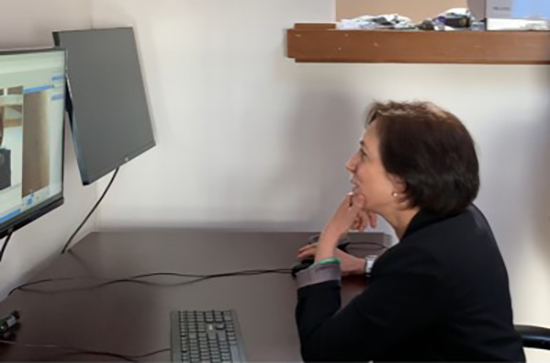Doctors trained in dermatology are extremely rare in Kenya, but a new teledermatology (telederm) system at the IU-led AMPATH partnership allows a single dermatologist to utilize technology to serve patients throughout western Kenya and might soon do the same for patients in Indiana as well.
Toby Maurer, MD, professor of clinical dermatology at IU School of Medicine, worked with colleagues at AMPATH and with support from the Department of Dermatology at IU School of Medicine and IU Health to establish the system to allow for the remote diagnosis of dermatologic conditions in Kenya. “(Dean) Jay Hess and (IU Health President) Dennis Murphy saw the need, interest and importance of this during their visit to AMPATH. (Department Chair) Elliott Androphy and (Administrator) Chris Gooden pushed it forward and made it happen. I am incredibly grateful to Indiana University for funding this,” Dr. Maurer said.
The system allows clinicians at remote clinics to utilize an iPad to photograph patients with skin issues which are then reviewed by a local dermatologist. Maurer estimates that 65 percent of patients can be treated by their primary care providers without having to make a long and potentially expensive journey to see a specialist in person. Eventually, the goal is that artificial intelligence could be developed to make the diagnosis based on the photos that are loaded into the system.
The Hoosier health care leaders recognized the benefit that telederm could have in Indiana as well. “People in rural Indiana and rural Kenya face similar challenges to accessing diagnosis, screening, triage and linkage to care,” said Dr. Maurer. “This is an example of reciprocal innovation or taking something that is working in Kenya and bringing it to Indiana.” The adoption process is underway beginning with Methodist Hospital in Indianapolis. “Eventually I hope we can provide dermatologic care for the citizens of Indiana based on the telederm program in Kenya,” she added.
Dr. Maurer is also working with the International Foundation of Dermatology to implement the telederm system in refugee camps in Bangladesh for the Rohingya refugees. All reading will be done by local dermatologists in partnership with the University of Chittagong.
“We are following in the footsteps of what AMPATH and Kenya have done. AMPATH inspires me every day because I see what we can do when we work together,” concluded Maurer.



